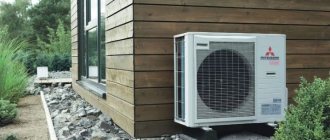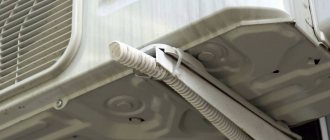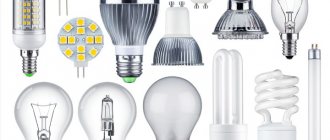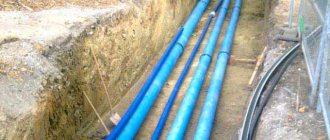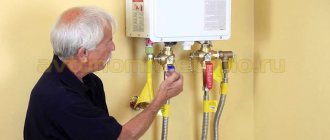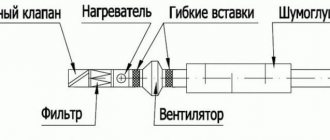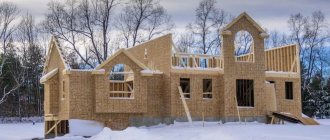Cynthia Shirk / Shutterstock.com
If you live in a place that experiences snowy winters, you may see quite a few people putting a lid on their air conditioners when they're done using them for the season. Maybe you'll do it too. But should you?
Your HVAC system is expensive, and anything you can do to extend the life of your furnace and air conditioner is worth it. Having recently spent a huge amount of money replacing everything in my HVAC system except the ductwork itself, I understand all too well the desire to keep your equipment in top condition for as long as possible. Let's take a look at when (and why) you'll want to shut down your AC unit, and more importantly, how to do it and what not to do it.
The operating principle of modern split systems
All modern climate control devices operate on the same principle, based on the property of liquids to release heat during condensation and absorb it during evaporation. Initially, all manufactured systems worked only for cooling, but today most of them are also equipped with a heating function.
The operation of the air conditioner is based on the functioning of a closed system: the compressor, condenser and evaporator are connected to each other by copper tubes that form a refrigeration circuit. The refrigerant continuously moves along this circuit, transforming from a gaseous state to a liquid state and vice versa. When the equipment operates for cooling, freon first enters the condenser and then into the evaporator, where it is again converted into gas and absorbs heat from the air in the room, after which it is sent to the external unit, from where it transfers energy to the environment. When working for heating, thanks to a special valve, the process occurs in the reverse order - from the evaporator to the condenser with the transition of gas into a liquid state.
What types of air conditioners do manufacturers produce?
Air conditioners can differ in different parameters:
- design features;
- location in relation to the serviced premises;
- operating principle;
- method of regulating air parameters;
- number of premises served;
- the ability to maintain the required microclimate parameters in the room with a certain accuracy;
- appointment.
The classification of air conditioning systems is presented in more detail in the diagram below.
This is how air conditioning systems can be classified
Within the framework of the issue discussed in this article, the division of air conditioning systems depending on their purpose into comfortable and technological deserves the greatest attention.
The first are human-oriented and are designed to maintain optimal microclimate parameters in residential, administrative and public buildings. The latter are focused on equipment and equipment. They are designed to maintain the necessary microclimate conditions in industrial premises (for example, in confectionery shops, in the kitchens of cafes and restaurants, or in data processing centers).
Heating function in split system
Heating by air conditioning in winter is possible when it is initially equipped with such a function. On the remote control this mode is usually o.
Before you start using the heating system, you need to find out the lower temperature threshold at which you are allowed to turn on this function, and the air conditioner instructions will help with this.
By default, the maximum temperature usually does not exceed 0°C. But there are devices that can cope with frosts reaching -10°C and even -15°C. This is feasible thanks to a different type of freon and the ability to adjust the operation of the compressor, available in inverter devices.
If the device is working, there are no error marks on the remote control, but warm air is not coming in - the system probably needs time to warm up if it is frosty outside. This usually does not take more than 15 minutes.
Air conditioners winter summer
In general, if you need a winter-summer air conditioner, then you should choose it from the catalog of inverter models. For example, the product catalog of the Clean Air Company online store offers a large selection of inverter split systems.
This includes heat pumps for complete heating of a private home all year round.
Factors on which the degree of suitability of an air conditioner for heating in winter depends:
- Firstly, the type of inverter control. For example, a partial inverter has a smooth control of the compressor power of the outdoor unit. Which allows it to work with heat down to -10\15°;
- The full inverter ensures smooth power changes for all key elements. Not just the compressor. But also fans of outdoor and indoor units.
- Secondly, the size of the outdoor unit heat exchanger. For stable operation in winter, a larger pitch of the heat exchanger plates is needed. As well as a large depth of the heat exchange block.
- Thirdly, the logic of the defrosting mode of the outdoor unit. To prevent the formation of condensation under the street unit when heating in winter, a special defrosting algorithm is required.
- Fourthly, the type of compressor: scroll or rotary. Most household split systems are equipped with rotary compressors. But models intended for active winter use have spiral ones.
So you can turn on the air conditioners for heating in winter. And even necessary to save on the heating system. You just need to choose the right model.
So, if you decide to organize heating of your home with air conditioners, we will be happy to help! Clean Air Company managers will help you determine the right model. In addition, you can buy a reliable winter-summer air conditioner with installation from us. Plus, we provide a 3-year installation warranty.
Need air conditioning heating in winter? Choose a good inverter!
Which split systems can operate in heating mode in winter?
The modern market offers equipment that can be safely turned on in heating mode in winter - even when the temperature drops to -15°C...-30°C. These are inverter-type split systems. What distinguishes them from standard air conditioners is the presence of an inverter compressor, which provides performance control. The use of an inverter compressor with EVI-injection of refrigerant vapor and receiver allows for stable operation at very low ambient temperatures - some models provide operation at -30 °C.
Wrong way to cover an AC unit
Do not do that. Your air conditioner doesn't like being suffocated. IkeHayden/Shutterstock.com
If your situation requires covering your AC unit, then this seems pretty simple, right? Just go to your local hardware store and get a large plastic bag box, or even wrap it in a small tarp and some bungee cords. This is probably what your neighbors are doing, so it looks like you should too.
Just not so fast. Covering your air conditioner this way is ultimately worse for your poor AC unit than not covering it at all. Why? When you wrap your air conditioner in a Christmas present style that covers not just the top of the unit but the sides all the way down to the ground, you create a chamber that traps moisture and speeds up rust formation.
Of course, top-to-bottom lids that close completely will keep out rain and snow that falls directly on the unit, but as anyone who has stored anything outside with a tarp knows, eventually moisture from the environment will rise up and get trapped under the tarp. Even lids with small holes for ventilation and the like on the side do not allow moisture to pass through easily.
While properly sized commercial covers are imperfect at best, doing what you see in the photo above - wrapping the entire unit in an oversized plastic tarp - is the worst method. No breathability, no vents, just moisture rising from the surrounding soil and getting trapped under the tarp.
Why is frost dangerous for a split system?
The operating principle of an air conditioner is quite simple, but changing conditions at any stage can lead to serious damage.
- Firstly, starting a cold compressor is dangerous. The oil in it thickens at low temperatures, and therefore the unit operates under increased load.
In addition, without lubrication, the friction of metal parts produces chips that clog and damage the system. Therefore, even a new compressor installed to replace a broken one can quickly fail even with correct operation.
- Secondly, the freon in the external radiator may not have time to evaporate. The activity of heat exchange depends on the temperature difference. Therefore, with a slight plus outside, freon, warming up from -40C, will absorb a lot of thermal energy.
If it is -30C outside, then the refrigerant may not have time to warm up even to the boiling point. The result is liquid freon entering the compressor and its inevitable breakdown due to water hammer.
- The third danger is condensate freezing and icing..
An ice shell on the outdoor unit interferes with heat transfer and can interfere with the fan, which increases the load on all parts of the system. Automatic defrosting is designed to solve this problem, but the water draining from a heated radiator often immediately freezes in the pan. When the ice layer reaches a certain thickness, the fan blades freeze into it, and the air conditioner stops working.
Condensation in the drain pipe can also freeze at the point of exit to the street - if the air conditioner is working on cooling. This may be necessary in winter in server rooms or in the defrosting mode mentioned above. Such an ice plug prevents further drainage of condensate, and it begins to ooze down the wall, provokes the development of mold in the indoor unit, and can damage it.
Even cooling work in winter can cause problems. In this case, the air conditioner takes too much cold from the street, and the condensation on the indoor unit turns into frost and ice. Naturally, this is also detrimental to the equipment. In addition, the problem of cold start of the compressor remains relevant.
Differences in the design of frost-resistant air conditioners
Why can one air conditioner be turned on at 30 degrees below zero, while it is undesirable to start others at -50C? The answer is simple: structural features and configuration. The cost of a split system is not always directly proportional to its capabilities, and therefore it is useful to know what effective design solutions exist.
To understand whether it is possible to turn on a particular air conditioner for heating in winter, or whether this is dangerous for the device, pay attention to such details.
Firstly, a low temperature kit should be built in from the factory to prevent cold starts of the compressor and condensate freezing.
As we have already mentioned, inverter models are preferable in winter, since their compressor does not stop when the set temperature in the room is reached, but only slows down. This means that it will not cool down every time and start up with an overload, and it is also more profitable in terms of energy consumption.
The heat exchanger of the outdoor unit can be enlarged so that the freon inside has time to completely evaporate and absorb maximum heat from the air before entering the compressor.
The large area of the heat exchanger allows the split system to operate efficiently even with a small difference between the boiling temperatures of the refrigerant and the air outside
There are also double-circuit heat exchangers in which the performance is regulated by connecting an additional freon circulation circuit. The external unit and heat exchanger may include additional casings and heat accumulators to use the energy generated by the operating equipment.
A high-power compressor compresses the gas more strongly, heating it to higher temperatures. In industrial models, there are also scroll compressors that are not afraid of the ingress of liquid freon.
The refrigerant itself may have different properties. Cheap and widespread R-22 evaporates at -400C, while being able to absorb heat of 233 kJ/kg. For comparison, the newest R-32 evaporates at -51.70C, and is capable of retaining heat up to 390 kJ/kg.
This means that under the same conditions, the second one will heat up faster and more efficiently in the heat exchanger, and the air conditioner or split system will operate with lower energy consumption and higher efficiency.
The type of oil that lubricates the compressor also depends on the type of refrigerant. R-22 works with mineral oil, which maintains an acceptable viscosity down to -50C, and R410A and R32 - with synthetic oil, which is stable down to -70C. It would seem that the difference is small, but taken together with other factors it is significant.
Mitsubishi Zubadan is the most famous series of heat pumps that operate in winter at temperatures down to -250C. They cost 3–5 times more than split systems, which can heat only in slight frosts
The more of the listed upgrades the air conditioner has, the lower the temperature it can operate at. However, for many inverter models you may not even know the maximum permissible temperature: the electronic control simply will not start the system if it is too cold outside.
Features of operating a split system in winter
Split heating systems should be operated in the winter season, adhering to certain rules.
Instructions and features for operating split systems in winter:
- It is forbidden to turn on the device if the temperature outside is below the critical value specified in the product data sheet.
- When working for a long time at sub-zero temperatures, the radiator freezes, which reduces the efficiency of the equipment. The device with a certain frequency (once every 40-60 minutes) goes into defrost mode, during which hot freon from the indoor unit passes into the outdoor module. The frequency and duration of this cycle depends on the degree of frostbite.
- During heating operation, water flows from the radiator grilles into the pan. At subzero temperatures, it turns into ice, which must be removed, otherwise serious deformation of the heat exchanger tubes may occur. You cannot knock off the ice by hand; you need to pour water from a hot kettle onto frozen areas. To eliminate such consequences and hassles in the fight against icing, you can purchase an air conditioner with a built-in sump heating cable.
- You should not set the temperature setting too high to heat the air in the room, as this will force the device to operate at high power, which will lead to rapid wear. Recommended value +18+25.
In winter, the air conditioner also requires periodic maintenance. At least once every 2 weeks, you need to clean the filters and wash the impeller, where pathogenic bacteria often accumulate. It is also mandatory to timely refill with freon and preventively check the performance of important system mechanisms, performed by experienced specialists from the service center.
Winter air conditioner kit
Recently, more and more often you can find proposals for equipping an air conditioner with a winter kit. Sellers of this equipment assure that its installation will make the air conditioner an effective heater throughout the winter, even in frosty weather. Whether this is so - we will figure it out.
Components of a winter work kit
A low-temperature kit, as a rule, includes 3 components: a heating pan, a compressor crankcase and a fan speed controller. Sometimes there is also a temperature sensor and a control board - separate for each component or common to all.
Heating the pan is necessary to prevent the condensate draining from the radiator from freezing when the defrost mode is turned on.
The crankcase heater is a wire or plate that surrounds the compressor in the place where oil accumulates.
It is advisable to turn on the compressor heating before starting the air conditioner so that the oil has time to warm up. In practice, heating often occurs either only during operation or only during idle time. Only the second option will ensure safety for the compressor, but it is less profitable due to increased energy consumption.
Thanks to crankcase heating, you can avoid cold starts and operation of the compressor when the lubricant has thickened in the cold, which means increased load during startup and wear of moving parts
Adjusting the fan speed determines the activity of heat exchange between freon and the external environment: the stronger the air flow, the more heat is transferred. When working for heating, this is not critically important, because maximum heat transfer is needed, and high fan speed is set from the factory.
It’s another matter if the air conditioner operates for cooling at temperatures below +14 - +180 allowed by the manufacturer. Then the freon can give off too much heat, and the indoor unit will begin to freeze: it will become covered with frost and ice, and the condensate will freeze. To prevent this from happening, the fan is slowed down.
Is it advisable to install a winter kit?
After installing a low-temperature kit, the owner may have a question: is it now possible to heat the room with an air conditioner at low outside temperatures? The answer is yes, you can, it is now safe for the air conditioner. The exception is unqualified installation or home-made equipment.
If there is dripping from the roof on the air conditioner and therefore huge icicles form, a winter kit will not help - you need a protective visor
Is it effective? Air conditioning heating is valued for its efficiency: its efficiency can reach 3 – 5 and even 7, depending on the model. This is achieved by the fact that the split system is the only heater that does not produce heat. The compressor and fans require much less energy to operate than the system can move into the home.
The declared efficiency, or, as the manufacturers write, COP, is relevant when operating for heating at +70 outside. As it gets colder, the temperature difference between air and freon decreases, which means heat exchange worsens and the efficiency of the air conditioner decreases.
At temperatures below -150C, the efficiency of the air conditioner decreases to approximately 1%, that is, for every kilowatt of electricity consumed, only 1 kW of heat can be obtained. Conventional convectors or infrared heaters, which are cheaper and do not depend on the outside temperature, also have such indicators.
Of course, these calculations are approximate; the result greatly depends on the model of the air conditioner, the low-temperature set, and even the connection diagram of the second one. But the fact is that the lower the temperature outside, the less effective and economical heating with a split system is.
Considering that the cost of a good winter kit for turning on heating with an air conditioner with installation can be 40 - 150% of the cost of the air conditioner, and it will work effectively only down to -150C, the feasibility of the purchase is very controversial.
When the air conditioner operates for cooling in winter without a low-temperature set, frost and an ice crust forms on the indoor unit
It's another matter if you need to cool the room in winter. For example, for a room with equipment. Then the lower limit of permissible temperatures drops from +16 declared by the manufacturer to severe frosts, and the efficiency of the air conditioner will not decrease.
Installation and connection of the winter kit
As we already mentioned, professional installation of a low-temperature kit is not cheap. Not every owner of a split system is ready to pay 5,000 rubles or more for the opportunity to turn on the air conditioner for heating at a temperature 10 - 15 degrees lower than stated. If you're not prepared for that kind of expense, you might be interested in installing a winter kit yourself.
Let us remind you that to operate in winter, the air conditioner requires heating of the sump, the compressor crankcase and the RDK unit - a condensation pressure regulator that controls the fan speed. You can buy a ready-made kit and install it yourself.
Then you will be freed from the difficulties of choosing and searching for components, and will also save money on installation, but you will probably lose the warranty on the split system. Naturally, self-installation means additional hassle.
The most economical option is to buy 2 pieces of heating cable, preferably self-regulating, and connect them yourself. Controlling the fan speed when working for heating can be neglected; we explained why above.
When choosing a low-temperature kit, pay attention to what power air conditioners it is intended for. There are 2 types of sets, up to 12 BTU and for more powerful systems
To heat the tray, you will need a piece of heating cable about 3 m long. They lay it around the radiator both from the outside and from the inside, as well as along the entire tray in a snake. You can connect the power supply to the outdoor unit, like the factory heating, to the main phase - then the cable will always heat as long as the air conditioner is plugged in, even when idle.
Alternative options are to bring a separate cable with a plug to the outlet and turn it on manually, connect it to the network through a thermostat on the street or through a timer.
To warm up the oil in the compressor, wrap a piece of heating cable around it at the bottom. The electrical connection is carried out together with the heating of the pan.
If you purchased an RDK, you need to find a free space for it in the control compartment, above the compressor, and secure it with self-tapping screws. The electrical connection differs for different models and is always described in detail in the instructions. For correct operation, the sensor included in the kit is attached to the middle loop of the radiator, coated with thermal paste, and wrapped with heat-insulating material.
How to turn on the split system for heating?
To switch the heating mode, use the control panel. After turning on the option, you should not expect an immediate flow of warm air. It will arrive in the room in 10-15 minutes.
Turning on the air conditioner for heating (step by step instructions):
- On the control panel press the “ON” button.
- To turn on the heating mode, use the MODE button, then HEAT. On some remote controls this button is marked with a “sun” symbol.
- Using the +\– buttons, the user can set the required temperature value.
- After setting the temperature, the device is activated in operating mode. The fan will start and within a few minutes warm air will begin to flow into the room.
In some models of split systems, the heating mode is turned on in the reverse order: first the user sets the temperature, and then presses the button to start the operating mode. The attached instructions contain precise information on how to turn the air conditioner on warm.
Operate air conditioners in winter according to the rules recommended by the manufacturer, and be sure to check the air temperature outside, focusing on the permissible temperature range parameter, before turning on the air conditioner for heating. This will allow you to effectively operate climate control equipment during the winter season, eliminating the risk of its rapid failure.
Care
No special care of the air conditioner is required in winter if you do not plan to use it throughout the frosty period. It is enough to carry out preparatory work on cleaning and de-energizing, and in the spring call a specialist to carry out comprehensive maintenance.
If you use an air conditioner in winter, you need to take care of it from time to time - clean the external panels and mechanical filters of the indoor unit, and also, if necessary, wash the fan and heat exchanger radiator in the room module.
The frequency of treatment depends on the dustiness of the room and the number of people constantly present there. If you have carpets, rugs, curtains and other fabric surfaces, cleaning will have to be done at least once a month. If the room is slightly dusty, it is not necessary to maintain the air conditioner so often in winter. Cleaning once a season is sufficient.
The most basic point of high-quality air conditioner care is still compliance with the established framework, even for systems with an extended operating temperature range. It is also worth remembering that when turning on the device in cold or warm conditions, you should not keep the window and balcony door open.
Pros and cons of using a split system for heating
Many people do not know which device will be more effective. The operation of the unit in winter consists of the presence of special parts that are not present in summer models. For example, if you use strong air pressure to convert it into heat, the mechanism will be subject to severe stress and may eventually break. The amount of electricity used can also increase greatly, so it is better to immediately purchase a device model with 2 modes. Such models have many advantages in use:
- Automatic control and preservation of the set temperature in the apartment, as well as switching it to any of 2 directions.
- Low amount of electricity consumed.
- The equipment cannot harm the residents of the house in any way.
- Low combustion of air in the apartment. The emission of carbon monoxide is minimized, in contrast to TEN (tubular electric heater) models.
- Good efficiency.
Servicing your air conditioner | Department of Energy
You are here
Home » Air Conditioner Maintenance
Replacing or cleaning your air conditioner filters is an important maintenance task.| Photo courtesy of © iStockphoto / firemanYU.
The air conditioner's filters, coils, and fins require regular maintenance to keep the unit running efficiently and effectively for many years to come. Neglecting necessary maintenance allows air conditioning efficiency to steadily decline while energy consumption continually increases. Check out our Energy Saver 101: Home Cooling infographic for more ways to improve your comfort and the efficiency of your air conditioner.
The most important maintenance task that will ensure the efficiency of your air conditioner is regularly replacing or cleaning its filters. Clogged and dirty filters block normal air flow and significantly reduce system efficiency. If normal air flow is obstructed, air bypassing the filter can carry dirt directly into the evaporator coil and impair the coil's heat absorption capacity. Replacing a dirty, clogged filter with a clean one can reduce your air conditioner's energy consumption by 5-15%.
In central air conditioners, filters are usually located somewhere along the length of the return duct. Typically, filters are located in walls, ceilings, furnaces, or in the air conditioner itself. Room air conditioners have a filter installed in a grille that faces the room.
Some types of filters can be reused; others must be replaced. They are available in different types and degrees of effectiveness. Clean or replace your air conditioning system filter or filters every month or two during the cooling season. Filters may need more frequent maintenance if the air conditioner is in constant use, is in dusty conditions, or if you have fur-bearing animals in your home.
The evaporator coil and air conditioner condenser coil collect dirt over months and years of use. A clean filter prevents the evaporator coil from quickly becoming dirty. However, over time, the evaporator coil will still collect dirt. This dirt reduces airflow and insulates the coil, reducing its ability to absorb heat. To avoid this problem, check your evaporator coil every year and clean it if necessary.
Outdoor condenser coils can also become very dirty if there is a lot of dust outdoors or if there are leaves nearby. You can easily see the condenser coil and notice if dirt collects on its fins.
You should minimize the amount of dirt and debris near the condenser. Dryer vents, falling leaves and your lawn mower are all potential sources of dirt and debris. Cleaning the area around the coil, removing any debris, and trimming leaves at least 2 feet away will ensure adequate airflow around the condenser.
The aluminum fins of the evaporator and condenser coils bend easily and can block air flow through the coil. Air conditioning wholesalers sell a tool called a "fin comb" that combs these fins back to near original condition.
From time to time, pass the hard wire through the drainage channels of the device. Clogged drainage channels prevent the unit from reducing moisture, and excess moisture can discolor the walls or carpet.
Window seals for room air conditioners
At the beginning of each cooling season, check the seal between the air conditioner and the window frame to make sure it is making contact with the metal frame of the unit. Moisture can damage this seal, allowing cool air to escape from the home.
In winter, cover the air conditioner in the room or remove it and store it. Covering the outdoor unit of your central air conditioner will protect the unit from winter weather and debris.
If your air conditioner requires more than regular maintenance, hire a professional service technician. A well-trained technician will find and fix problems in your air conditioning system.
The technician must:
- Check the correct amount of refrigerant
- Check for refrigerant leaks using a leak detector
- Capture any refrigerant that needs to be removed from the system rather than illegally releasing it into the atmosphere
- Check availability
- Measure air flow through evaporator coil
- Check the correct electrical control sequence and ensure that the heating system and cooling system cannot operate at the same time
- Inspect electrical terminals, clean and tighten connections, and apply non-conductive coating if necessary.
- Lubricate the motors and check the belts for tension and wear.
- Check thermostat accuracy.
Air conditioner maintenance
.
Preparing the split system for cold weather
To protect the unit from severe frosts, it is necessary to prepare the system, since a short start of the device in severe frost can lead to breakdown. To use your air conditioner normally in summer, you need to do the following:
- completely pour the refrigerant into the external unit;
- put a canopy - protection from snow;
- Do not use the device too often in winter.
After winter, you should not rush to turn on the air conditioner without diagnostics. Experts insist on supplementing the pipes with freon and carrying out a complete cleaning.
The correct way to cover an AC unit
Enough to keep debris and snow out. Jason Fitzpatrick
If tightly wrapping your AC unit in one of those big cube-shaped covers from the local hardware store isn't the right way to do it, what's the right way? Perhaps counterintuitively, the proper way to zip up your air conditioner for the winter is not to pack it up like a child going to the playground, but to simply cover the top as if he were wearing a hat for cold weather.
Use the top cover
To do this, you just need a simple cover that prevents leaves, pine needles, and precipitation from falling directly into the unit's vent. Some people achieve this by laying a block-sized piece of plywood on top and then pressing it down with a brick. But this is not a very elegant solution, and it puts unnecessary weight and pressure on the top of your AC unit.
Instead, we recommend using a durable and purpose-made mini tarp, like this model from Jeacent.
Tarps come in sizes of 28″ x 28″ or 36″ x 36″ and are square in shape with rounded corners. You simply lay it across the top of the AC unit at a diamond angle (so that the corners of the cover are centered on the sides of the AC unit rather than at the corners) and then secure it with the little bungee cords that come with it. set.
Note: Do not over-tighten the elastic cords. You just need a little force to hold the lid in place. Maximum tension does not improve performance and may deform the air conditioner grille.
To give you an idea of scale, the photo above shows the 36-inch model of my Lennox XC20 air conditioner, which, as whole-home air conditioners go, is a shockingly large unit. The XC20 has a slightly oblong shape, measuring 36 inches wide and 39 inches long. However, with a 36-inch cover strapped on at an angle, it's more than enough to cover the opening and keep leaves and snow out.
Right after I put it on we had a rain storm. He leaves, defeated. Jason Fitzpatrick
Shortly after I put the cover on for the season, we had heavy rain and a hurricane, which demonstrated how well the cover does at keeping out debris. The water just billowed up from above and the leaves that fell on the lid just flew away as soon as the sun came out and dried up the water.
Change your old cover
If you already have one of the big cube lids that you paid good money for and you don't want to just throw it away, don't worry. You can easily modify it so that it still covers your AC unit, allowing air to flow freely around the sides to prevent moisture from building up.
All you have to do is buy a cheap grommet kit, often called a "tarp repair kit," and some short, scratch-free bungee cords. If you already have both lying around in your garage, you're halfway there.
Simply trim off the excess length of the cover so it looks more like a cap with 8-12″ drops on each side rather than a full cube-shaped cap. Add some grommets to the sides and then use bungee cords to keep them from deflating. If you want to clean a cut edge to keep it from fraying, just gently and lightly wave the flame around the edge to melt the fibers (all coatings are some type of plastic, be it woven nylon or something else, a little heat will seal the edge).
Preparing the split system for winter
In order to prepare the device for the winter season, a number of preventive measures need to be taken.
It is necessary to dry the indoor unit from accumulated condensate. To do this, the air conditioner must first be turned on for cooling for a while, and then turned on for heating for the same period. Clean the built-in filters from accumulated sawdust and dirt. If conditions permit, install a protective canopy on the external unit.
If there is a standard household air conditioner in the room, then it is better to limit it to turning it on in heating mode only during the off-season - until the temperature drops below the limit values set by the manufacturer.
Set a reminder to remove the cover
Your AC unit will not work very well with the cover in place and may even be damaged by it, so you should be sure to remove it before AC season comes around again.
It doesn't matter what date you use as a reminder, as long as that date is on your calendar and falls before the time of year when you turn on the air conditioner.
For most people, adding it to your Daylight Saving Time task list is an easy way to remember or add it to your spring task list, like pulling out the garden hoses and the like.
Covering your AC unit may seem like a hassle, but with the price of everything going up, a few minutes spent tinkering with the cover twice a year could save you a lot of money over the years.
Checking the operation of the split system in winter
It is important to know how to check the air conditioner in winter for heating operation. You can start checking the device when the outside temperature drops to -5 °C. If you decide to install air conditioning in winter, then it is advisable to wait for a little warming.
If it has already been installed, then it is better to start the device gradually, when the outside temperature is 0 °C. It is better not to take risks and carefully check the heating functions, because the chances of a breakdown are high.
Beware of icicles"!
Surely many of you remember the abnormally snowy winters that came to St. Petersburg and Moscow, when public utilities could not cope with cleaning the roofs of snow and the notorious “icicles,” the fall of which damaged dozens of cars and hundreds of outdoor air conditioning units until they were damaged beyond repair. And if it is still possible to obtain an insurance payment for a car, then damage to the air conditioner, alas, in most cases is the sole concern of its owner. Home-made devices designed to protect the external unit from the violence of the elements do not always properly perform their function, and if they are not secured correctly, they are simply dangerous for those passing near the house, especially during strong gusts of wind - alas, this is not a theory, but cases from practices. Professional preparation of an air conditioner for winter necessarily includes installing a new one or checking the quality of fastening of an existing protective canopy made of light and durable material, which will protect the external unit from the formation of ice and snow caps, gusts of wind, mechanical damage when snow melts or icicles fall from the roof . Winter is ahead, but spring is just around the corner! Prepare your air conditioners for it in the fall, and our company’s specialists will be happy to help you with this!
Free engineer call
Optimal operating conditions
The air conditioner can be turned on for heating at temperatures above 0 degrees, and preferably above +5 degrees (in winter, spring and autumn) - this is the verdict of experts. It’s best to look at the instructions for a specific device, where the operating range will be indicated. There are models that can operate in an extended range - for example, up to -5 degrees. It is prohibited to use them in frost below this mark.
We recommend reading: Valves for heating systems: balancing, check, three-way
Some models can be used at fairly low temperatures, but they are rarely found on sale and are more expensive. They work in temperatures as low as -25 degrees, which is important for regions with cold winters.
At what temperature can and cannot be turned on?
The best option would be to use an air conditioner during the winter season at temperatures from 3 to 10 degrees. In this case, the device will be able to show maximum performance when consuming 3 kilowatts of electricity (approximate number). If the outside temperature drops below 0, equipment performance drops. The compressor wears out and air begins to be pumped incorrectly.
However, all devices have their own permissible technical temperature limits when they can be used. For example, the instructions may indicate that compressor wear will occur at a temperature of -15 degrees. It will be possible to turn on the device when the reading is not lower than -12 degrees. This point should be understood when purchasing a foreign or Russian-made device for your home.
